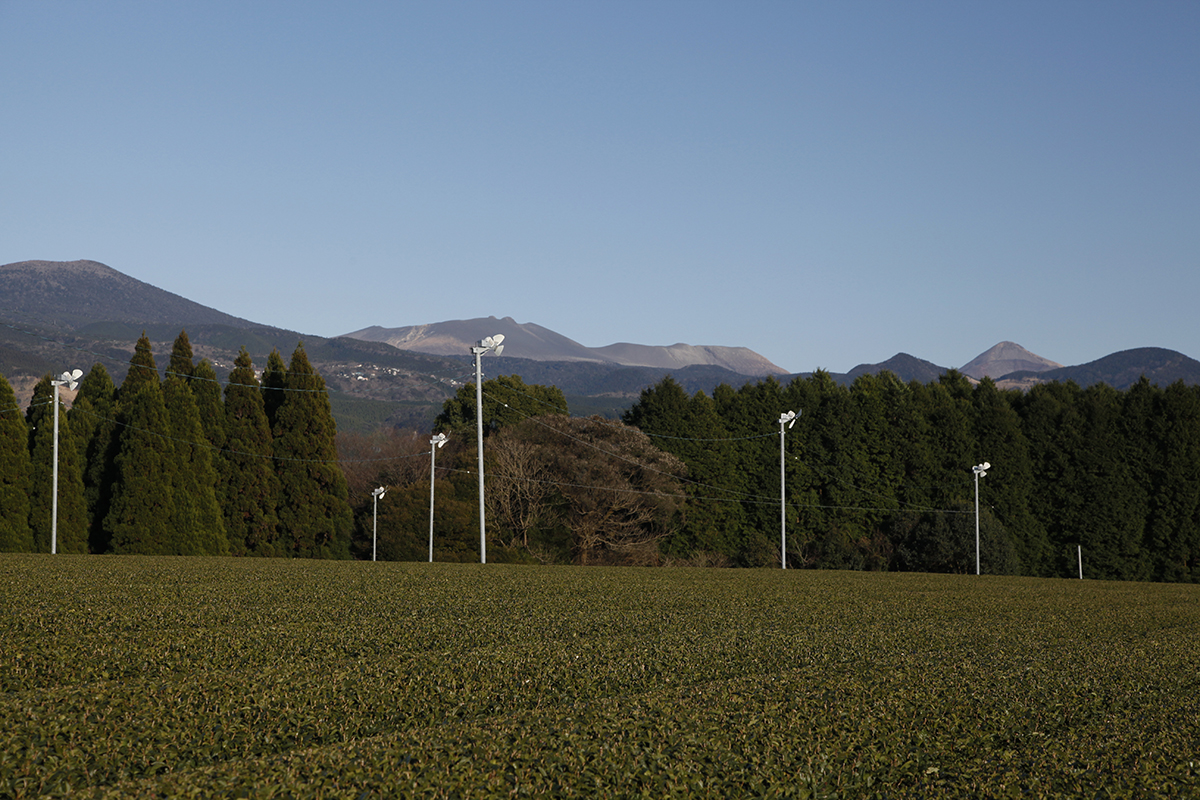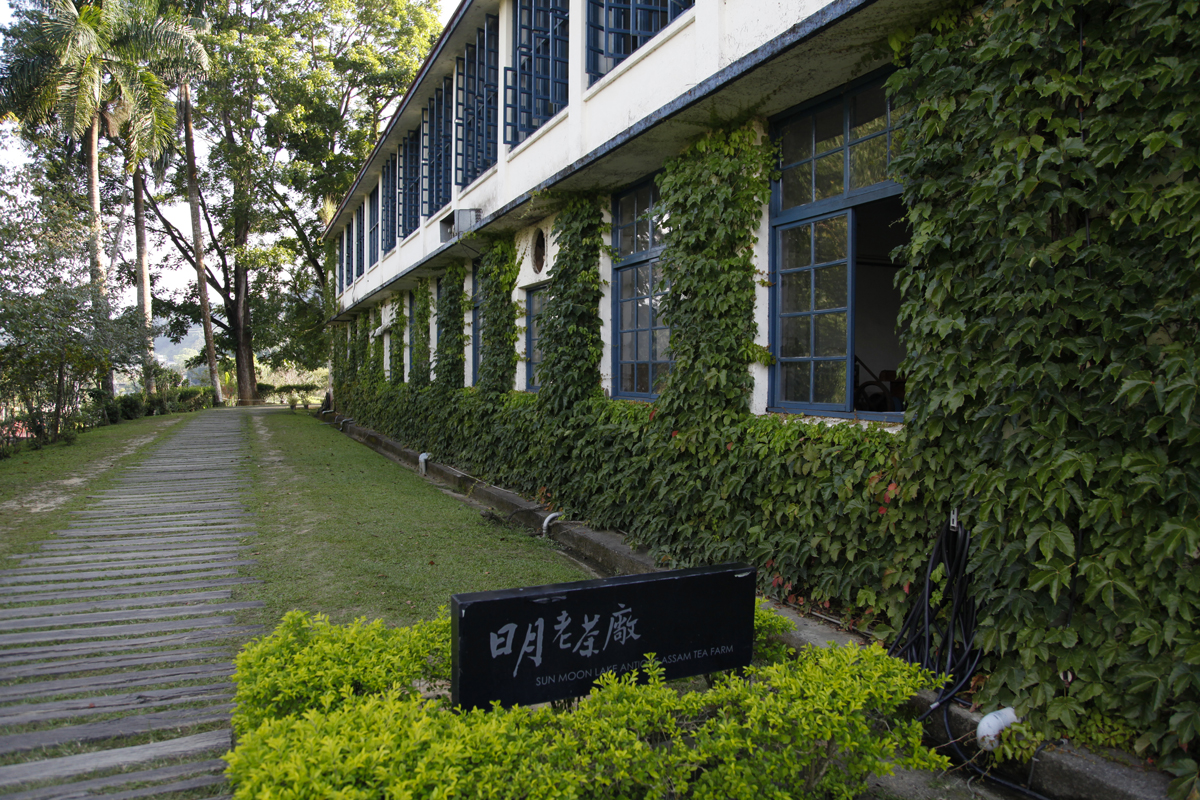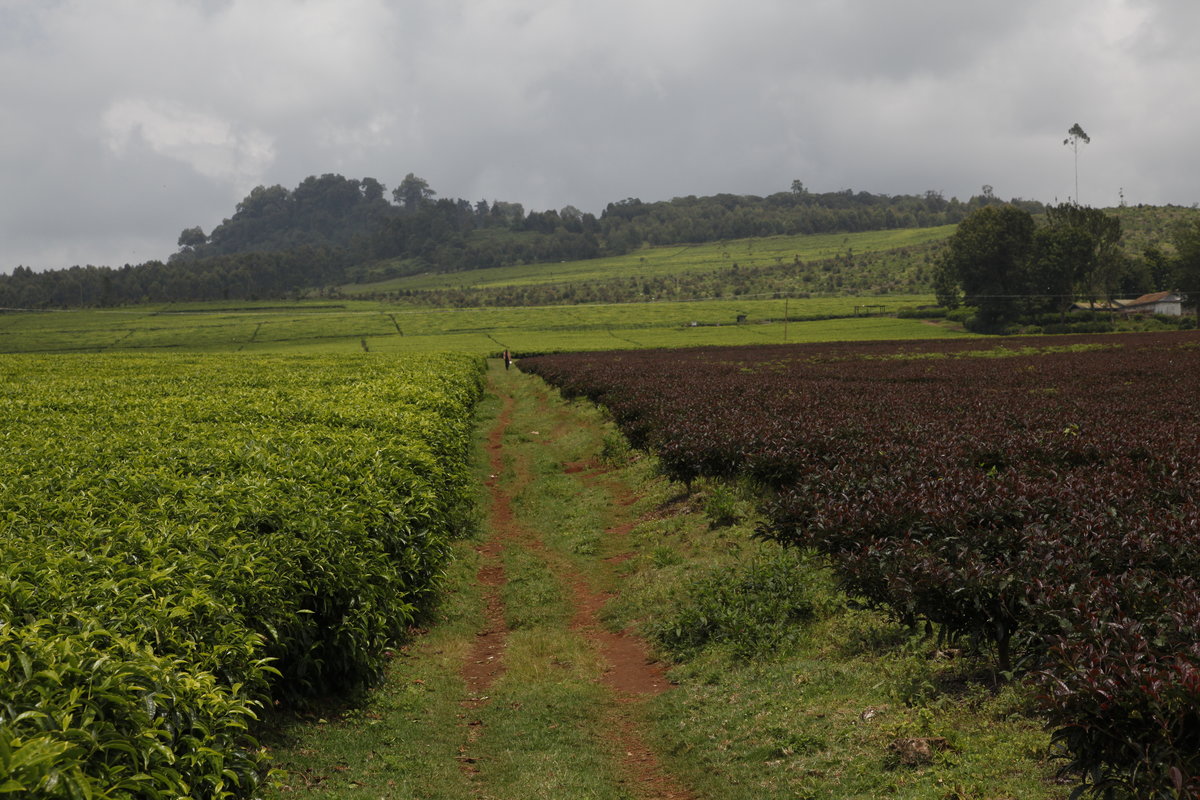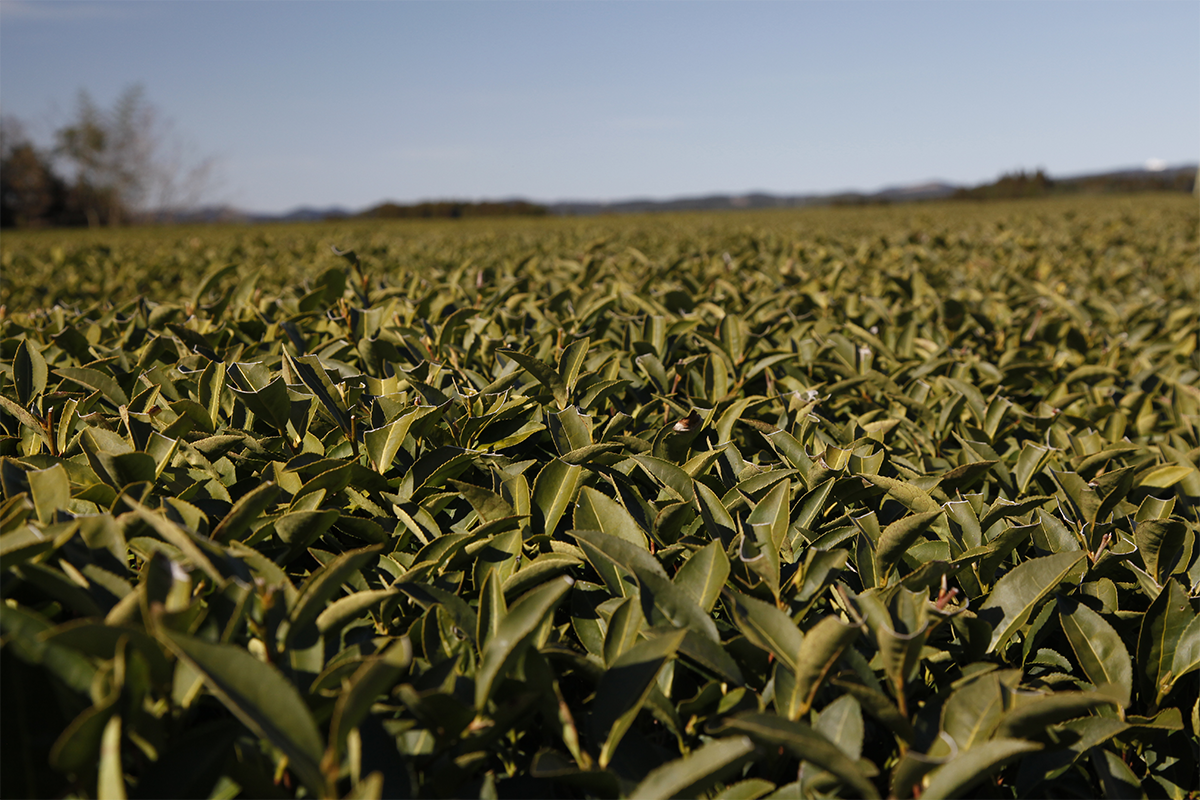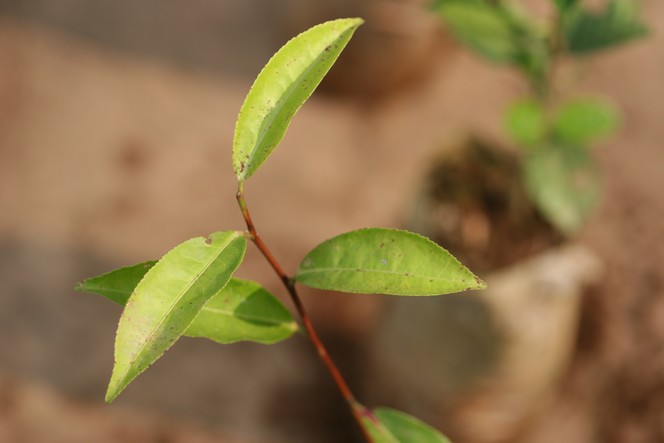In Darjeeling, a region I’m particularly fond of and have visited many times, there are large estates built by the British in the mid to late 19th century, as well as a number of small, local producers who own a few acres or collect the leaves harvested by neighbouring farmers. Some work on abandoned plantations. In these cases, the whole family harvests and then processes the leaves using artisanal methods, sometimes with great success. These initiatives include the Yanki Tea Farm and the Niroula Tea Farm.
Cultivars
Zen garden
In Japan, a very orderly country, the tea bushes are tended in the neatest rows. They form a kind of Zen garden, and in Kyoto and many other parts of the archipelago, whenever you see them you just want to sit down and take it all in. The aesthetic is captivating.
Carlota and her beloved jungle
In Colombia, tea grows in the Andes; more specifically, in the region of Cali, the capital of salsa. But there is more to this area of the Cauca Valley, south-east of the capital Bogotá, than dancing. Once known for its sugar cane, the district’s most famous crops now include coffee and cocoa. And surely tea too, one day, which creates beautiful landscapes here. Carlota, who oversees the region’s only plantation, has a principle: the plots cover a maximum of five hectares and are surrounded by the jungle, in order to protect the biodiversity that is so important to her. Carlota’s whole life revolves around her love of nature and her love of the jungle where she has chosen to live. She is devoted to her tea crops because they allow a whole community to live in these mountains and help preserve this unique, fragile and incredibly rich environment. It is a truly special place.
Tea in the Azores
Tea has been grown on the island of São Miguel in the Azores for over a hundred years. It has a hot and humid climate, acidic volcanic soil, and a mountainous terrain. That’s all it takes for the tea plant to feel at home here.
Mr Matsushita’s Shoju tea
The difference between the climate in the north and south of Japan, combined with the cultivars used in the country, some of which are earlier than others, mean the spring teas vary greatly in terms of when they become available. Traditionally, the well-known Japanese Ichibanchas are picked and processed at the start of May. But with global warming and the new cultivars being used by farmers branching out from the traditional Yabukita, some harvests are taking place earlier in the year. For example, Mr Matsushita’s Shoju, produced using an early tea cultivar grown on the island of Tanegashima, in the south of the archipelago, is already available. It has floral, vegetal and iodine notes. A foretaste of open horizons, and a pure delight.
Beneficial pain
With so much focus on the benefits of the vaccination needle, despite its brief sting, I wanted to look at a comparable phenomenon that affects the tea plant, in which momentary “pain” is beneficial. In some parts of the world, such as Taiwan and Darjeeling, a particular insect – a type of leafhopper called Jacobiasca formosana – likes to munch on the leaves of Camellia sinensis. The plant’s chemical response to this attack results in a rare, highly sought-after aroma in the cup. You will find this bouquet in an Oriental Beauty, for example, or a Darjeeling Muscatel. In these regions, farmers actively protect the insect to make sure they visit the plants and eat their leaves.
A black tea factory that is now a museum, in Taiwan
The island of Taiwan is famous for its Oolong teas. They are oxidised to varying degrees and so develop notes that are more vegetal, or on the contrary, more woody. But these teas, which are also known as blue-green teas, do not represent all of the island’s production. There are also green teas and black teas in Taiwan. Regarding the black teas, here is the building where they were processed, at the time of the occupation and when the Japanese were toying with the idea of making Taiwan one of the world’s biggest producers of black teas. The Japanese wanted to compete with British teas made in India.
A tea rich in antioxidants
We might want to drink a tea for its flavour qualities, but at the same time we can be aware of its benefits and in particular its polyphenol content. One of the varieties with the most antioxidants is TRFK 306/1. It was developed by the well-known Tea Research Foundation of Kenya (TRFK), which I have visited. What is special about this variety, in addition to its polyphenol content, which is 1.5 times higher than other teas, is the colour of its leaves. You can see here, on the right, their lovely purple hue.
Japan, the end of the single variety
Last week I talked about how the mixing of tea leaves by Japanese co-operatives can limit the range of flavours in the country’s teas, but there are also some very positive developments coming from Japan. For example, a few decades ago, the country could be described as mono-cultivar: the vast majority of growers used the Yabukita variety. Happily, today, there are an increasing number of cultivars used in Japan, such as sae-midori, oku-hikari and asatsuyu. A greater range of cultivars means that once the tea is infused, it produces a wider palette of aromas and flavours. And that is good news for tea lovers.
My favourite tea plant: “Ambari Vegetative 2”
Now that the Darjeeling First Flush season is well underway, today I’d like to introduce you to my favourite tea plant in this region. Its name is AV2, short for “Ambari Vegetative 2”. Despite its slightly spindly appearance, this cultivar produces the best teas.
I’ve just bought a single lot, Puttabong DJ7 “Clonal Queen”. Its producer reserves this prestigious name for lots plucked exclusively from AV2 plants. So this is not a blend. It has remarkable delicate aromatic notes that are both vegetal and floral.

